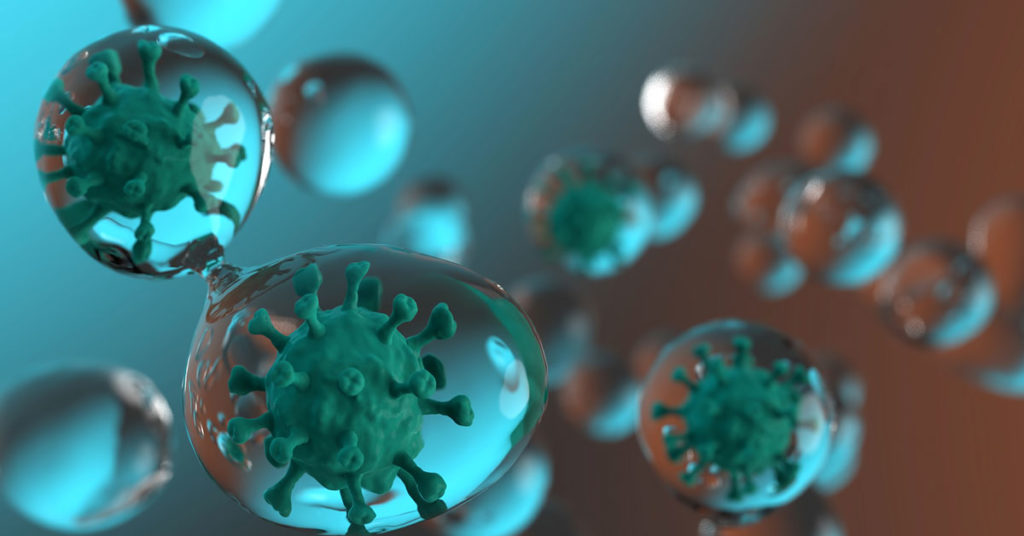
How to Disinfect and Protect Your Facility the Right Way
We recently launched a new disinfection and protection service by pairing our previous disinfecting protocols with an antimicrobial product. The disinfection process has become much more critical since the pandemic and best practices are constantly changing. We actually spent 6 months searching and we finally found a product and process that provided a much better solution for our customers. Like anything, it takes us humans time to adapt and fix problems.
There are 2 major advantages to a disinfection and antimicrobial protocol:
- A disinfection and protection solution is much safer because you don’t have gaps where people can infect your facility between disinfection sprays.
- You don’t have to spray every day (some clients spray 3-4 times a day right now). Most facilities can spray every 3 months with some spot sprays on high touch points if needed.
What We Were Doing (And What Most Companies Do)
Almost every company or janitorial service is spraying a disinfectant to kill viruses and bacteria. This is known as a “wet disinfectant.”
The process works by adding these chemicals to a sprayer and then spraying the area to get the best coverage. The chemical lands on the surface and when it contacts a microorganism, it will kill it. This is known as a “chemical kill.” Most of these disinfectants are harsh and have a 15-60 minute dwell time. It’s important to make sure the chemical is dry before people return to the area.
This works great until 15 seconds later when someone with COVID-19, the flu or some bacteria grabs the door handle and walks into your building. They sit in front of your chair to have a meeting and spread germs on the chair, the desk and any other places they touch. Imagine hundreds or thousands of people entering a building each day. There is nothing in a disinfectant that stops the spread until you spray again.
This is why many companies are spraying multiple times a day. The downside to this process:
- It still has holes like swiss cheese – microorganisms can spread between sprays
- If you only spray once a week, that is a giant hole
- It’s expensive and time consuming to be spraying that much
- You have to stop working, clear people out, spray and then they have to wait for the chemical to dry before safely returning to work. Employees are unproductive.
Adding a Layer of Protection
By adding an antimicrobial product, we create an additional layer of protection. Our complete process involves cleaning all dirt and dust on the areas to be sprayed. (Hint: disinfectants don’t work on dirty surfaces). Then we use our disinfectant spray to give us a clean fully disinfected area. We let the wet disinfectant dwell until its dry then we spray our antimicrobial product.
We use an antimicrobial product called PRO-Techs. It is not a harsh chemical. Its safe for everyone including kids and pets. It’s green, non-toxic, and non-corrosive. It is even EPA approved for food surface contact so it can be used in kitchens.
PRO-Techs uses an advanced nanotechnology to bind to any hard or soft surface. This molecule has large carbon “swords” with a positive electrical charge that attract microorganisms that have an negatively charged outer cell wall. The carbon swords pierce the cell wall. This results in what is known as an “electrical kill.”
How Long Does the Protection Last?
After the PRO-Techs antimicrobial is sprayed, it will remain on the surface and continue to protect most areas up to 90 days. However, the length of protection is determined by friction.
A desk that is worked at by a single person can be cleaned with a detergent and microfiber cloth every day and still keep the protection up to 90 days (sometimes much longer). So light friction from cleaning and dusting is not an issue. If some glue got stuck on the desk and you had to scrape it off with a brillo pad then the hard friction would cause the protection to wear off much faster. A door handle that’s used by hundreds of people a day might need resprayed in 30 days.
Every facility has different rooms, touch points and human traffic. We use ATP meters to test and measure cleanliness of different areas and touch points so know how long the protection lasts. This allows us to make a customized schedule that fits your building, office, church or school.
The Future of Disinfection
There is no doubt that the pandemic has changed how we approach cleaning and disinfecting. We are all starting to come back with a little more confidence, but the future is uncertain. Will variants of COVID-19 cause more outbreaks? We don’t know for sure. Will we go fully back to normal? Maybe. Maybe not.
There are some bills in Congress covering potential mandates for disinfecting along with tax breaks for expenses on cleaning services. There is a good chance that the combination of disinfectant plus antimicrobial will be the primary format for risk mitigation in the future.
Certainly cleaning and disinfecting costs go up, but there is actually a sound benefit to all this. You can protect against most microorganisms including bacteria, fungi, mold and other germs. Not only are you keeping customers and employees safer, but employees are less likely to spread illness = less sick days = less quarantines = more productive.
To learn more, visit our disinfection page and contact us to request a quote.
